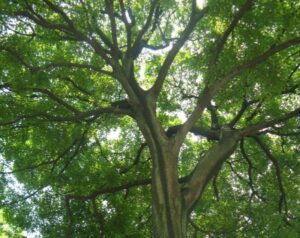Are you looking to do your part for nature and live in Iowa? If so, here are Six Indigenous Trees to Plant in Iowa!
Diversity is important to a healthy forest, be it a rural or urban forest. If the forest is not diverse, there is a chance the most dominant species can be wiped out should there be a disease or pest that will attack it.
That’s why it is recommended to have more than 20 percent of one genus in a community and not more than 10 percent of one species. This will ensure that trees will survive should there be any untoward incident that will happen.
Six Indigenous Trees to Plant in Iowa
If you are in need of help caring for your trees, or want to find local tree companies in Iowa be sure to search through tree companies on our site that can help you! So, without further delay, here are six Indigenous trees to plant in Iowa:
-
Swamp White Oak (Quercus Bicolor)
The Swamp White is a medium-sized tree that thrives well in moist to wet soils. Its bark looks like white oak, and its leaves are broad and lobed. Its leaves turn brown, yellow-brown, or reddish during fall, providing you with beautiful scenery during the season.
The acorns that the Swamp White Oak produces are also an important food supply for turkeys, deer, raccoons, wood ducks, and squirrels. Oak trees also support so much wildlife providing support to more than 500 species of caterpillars of native butterflies and moths. It is home to many other insects and birds, too.
Planting oaks in Iowa will help restore the biodiversity in the community.
-
Black Cherry (Prunus Serotina)
Mature and young cherry trees differ in appearance. Mature trees have a distinctive, scaly, black bark that looks like burnt potato chips. It also has long, slender, shiny leaves and snowy, white flowers. On the other hand, young cherry trees have smooth, thin, striped backs that usually release an almond-like odor when you scratch the twigs.
Black Cherry typically lives for 250 years and loves sunlight. Its fruit provides food for birds and small mammals in the late summer. It also provides a home to a variety of butterflies and moths.
-
Hackberry (Celtis Occidentalis)
 Another indigenous tree in Iowa is the Hackberry. It is a fast-growing, medium-sized tree that grows well in all soil types. They love sunlight, too. It is known for its “warty” bark and unequal leaf bases.
Another indigenous tree in Iowa is the Hackberry. It is a fast-growing, medium-sized tree that grows well in all soil types. They love sunlight, too. It is known for its “warty” bark and unequal leaf bases.
It has a yellow-green flower in May while its orange-red to purple fruit persists during the winter months. It is a valuable food for songbirds. The Hackberry also provides support to native species of butterflies and moths like the Hackberry Emperor.
You can buy Hackberry trees here.
-
River Birch (Betula Nigra)
A River Birch tree has a dark gray-brown to reddish-brown, papery peeling bark – making its bark distinctive among other trees. Its bark is also known as the exfoliating bark.
The River Birch grows well in both wet and rocky areas. Its exfoliating bark is a good hiding place for insects, especially during the winter months. In return, these insects provide sources of food for woodpeckers and other birds. Its seeds and flower buds are eaten by songbirds, turkeys, and small mammals.
The tree also supports hundreds of species of native butterflies and moths.
-
American Elm (Ulmus Americana)
If you want a fast-growing, hardy shade tree, then consider having an American Elm. The American Elm produces small green flowers that bees, butterflies, and other pollinators love during spring.
It has a dark gray, deeply furrowed bark and has flat, oval, and paper-like seeds that are an important food source for birds and small mammals. Its leaves turn yellow during fall.
The American elm is great for a street or yard. And one good thing about this tree is that it is tolerant of drought and urban conditions. It is also not susceptible to Dutch elm disease, which wiped out many elms before.
-
Tulip Tree (Liriodendron Tulipifera)
This tulip tree is a close relative of the magnolia and is considered to be the tallest hardwood in North America. It has a large shade and is known for its distinctive tulip-shaped leaf that turns into a beautiful yellow during fall.
By spring, the Tulip Tree produces yellow-green flowers with an orange accent. It’s not just beautiful, and it’s fragrant as well because it gives off a faint cucumber scent.
Tulip trees thrive the most in moist soils. And they are home to caterpillars of many native species of butterflies and moths, including the Eastern Tiger Swallowtail.
Six Indigenous Trees to Plant in Iowa
There you go! If you were looking for trees to grow in Iowa, this article on the Six Indigenous Trees to Plant in Iowa should give you a great idea on what to plant now to enjoy later! Look up these trees and choose the one that will grow best in your place. Since these trees are native to Iowa, then it is likely to grow well in your area.
And remember, if you’re ever looking for a local tree company, we’ve got you covered!

Recent Comments